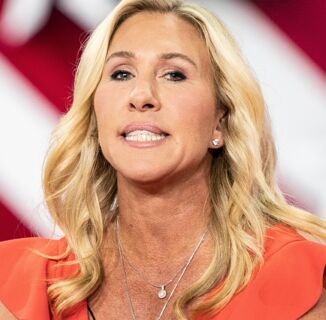A quarter of young queer men have never been tested for HIV, according to a new report from UCLA’s The Williams Institute.
In a recent survey of 470 men, one in four gay and bisexual respondents (or 25.1 percent) between the ages of 18 and 25 reported as such: that they did not know their status and had never known their status. Among older populations, rates of HIV testing were far higher: Around 92 percent of men in the 34-41 and 52-59 age groups had undergone HIV testing at some point in their lives.
Overall, 17 percent of MSMs (men who have sex with men) claim they have never been tested.
The Williams Institute report indicates that advocates have a long way to go in educating the LGBTQ community about prevention and treatment for HIV/AIDS. Just four percent of respondents claimed they are currently taking Pre-Exposure Prophylaxis (PrEP) treatments designed to prevent the virus’ spread.
Meanwhile, just over half of young gay and bisexual men (52 percent) had heard of medications like Truvada. The daily pill has been shown to be 99 percent effective at preventing HIV.
Bisexual men and individuals who lived outside major urban areas were least likely to be familiar with PrEP.
Ilan H. Meyer, distinguished senior public policy scholar at The Williams Institute and a lead researcher on the report, claimed in a statement that the findings illustrate that current “health education efforts are not adequately reaching sizable groups of men at risk for HIV infection.”
“It is alarming that high-risk populations of men who are sexually active with same-sex partners are not being tested or taking advantage of treatment advances to prevent the spread of HIV,” Meyer said.
Although The Williams Institute claims its findings are the most comprehensive national survey its kind in the U.S., it’s not the first to study to report extremely low testing rates among young MSMs. A 2014 survey of gay and bisexual teens between the ages of 14 and 19 showed that just 20 percent — or one in five — had been tested for HIV at some point in their lives.
Researchers with Northwestern Medicine and the Center for Innovative Public Health Research noted these results were much lower than the figures reported in 2008 by the Centers for Disease Control. At the time, 75 percent of MSMs aged 18 and 19 told the CDC they had been tested in the past.
Northwestern University professor Gregory Phillips II, a co-author of the study, claimed encouraging greater HIV testing should start with schools.
“Providing in-school testing would normalize the process,” Phillips said in a 2014 press release. “If there is a constant presence of on-site testing at schools, testing would seem less stigmatized. It would also increase knowledge about the testing process and make it less scary.”
But the recent study from The Williams Institute shows that targeting at-risk populations through greater outreach — whether in schools or other environments — can have a major impact on testing.
Although black gay and bisexual men are twice as likely as their white or Latino counterparts to be HIV positive, research shows they are also more likely to have been tested for HIV in the past. The Williams Institute notes that this discrepancy “may be due to recent efforts to target black men for HIV testing.”
Furthermore, MSMs who are out to their medical provider or who regularly visit an LGBTQ-affirming health care center are more likely to know their status.
You can read the report here.
Don't forget to share:
Help make sure LGBTQ+ stories are being told...
We can't rely on mainstream media to tell our stories. That's why we don't lock our articles behind a paywall. Will you support our mission with a contribution today?
Cancel anytime · Proudly LGBTQ+ owned and operated
Read More in Impact
The Latest on INTO
Subscribe to get a twice-weekly dose of queer news, updates, and insights from the INTO team.
in Your Inbox












